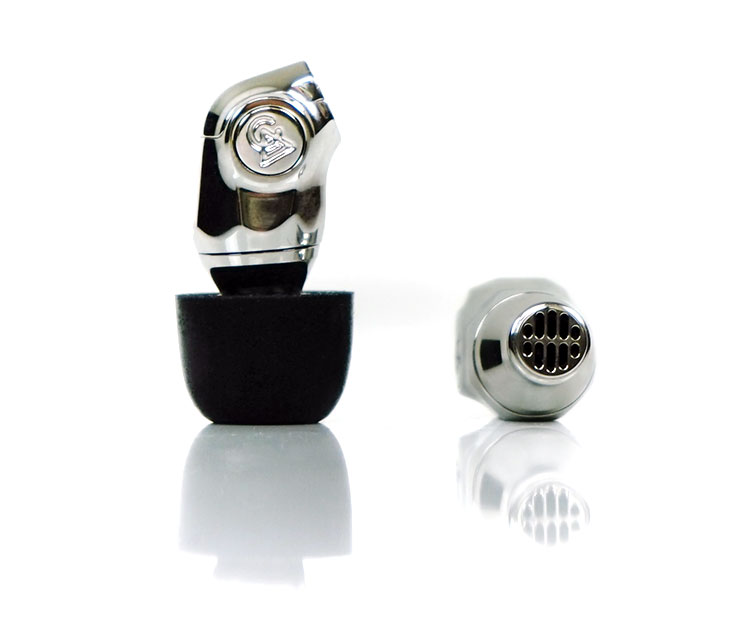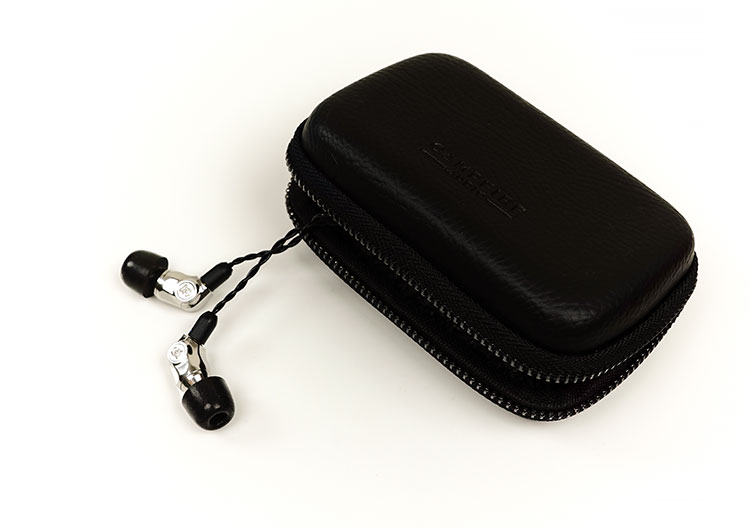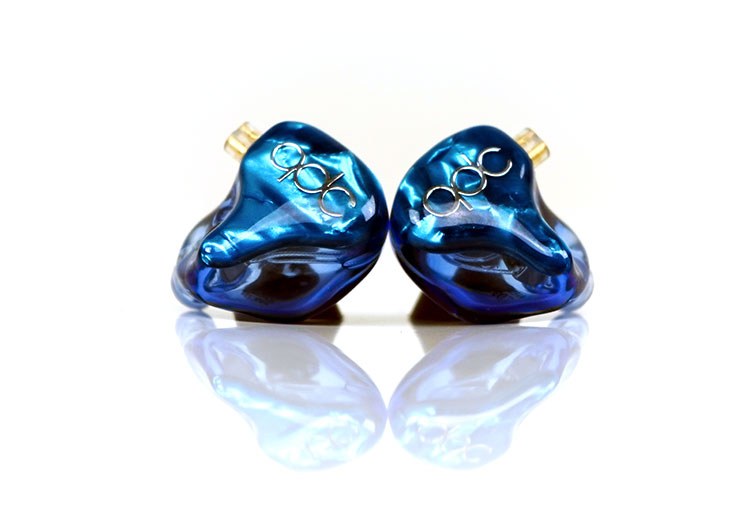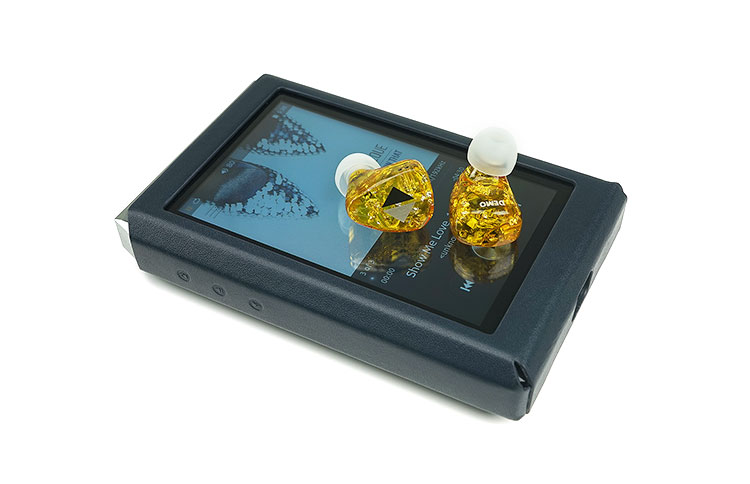Sound Impressions
Summary
Like the Jomo Haka, the Comet tonality will alter slightly depending on the tip you use. With the foam tip, there was an increase in warmth from top to bottom, an attenuation in the top-level presence, and a thicker low-end.
Switching to the spin-fits I felt I retained plenty of punch and low-end slam but the foam veil in the upper mids and treble was lifted so it will sound slightly cleaner or airier as a result. For my money, this is the better performing set of tips.
At its heart, the Comet is musical and u-shaped rather than linear or mid-centric in its tuning. Tonally, it is warm to natural-sounding though warmer with the foam tips and better balanced and cleaner sounding with the Spinfits.
There is a sub to mid-bass emphasis from the vented full-range driver that is impressive for a single BA, a slightly dipped mid-range up to around 2k then a fairly large jump around 3-4k, and once again around 7-10k though fairly controlled before falling away.
The T.A.E.C system Campfire use is impressive in preventing the balanced armature range from falling away up until that point. There is a small dip in the lower treble right around 7k which takes away any potential harshness without loss of too much air.
Bass
The Comet’s low-end quantity and lack of roll-off for a single BA are very impressive. Quite a lot of older designs will fall way and quickly by 100Hz but much like the Jomo Haka, the Comet keeps performing down to around 30-40Hz before it starts to attenuate and drop off.
The bass elevation is around 50-150Hz for me so mid-bass warmth has a bit more presence than pure sub-bass power but the fact it can show some punch down there at all is to be commended. Also, it has that balanced armature speed and snappiness with a slightly shorter level of decay than a typical dynamic driver.
Whilst it may not have a huge level of texture and detail compared to dynamic drivers the Comets low-end is quick-paced and punchy with decent depth. I can’t see this letting anyone down on EDM and synth-wave genres.
Mids
From around 200Hz to 1k the Comet dips so there is a bit of warmth from the mid-bass slipping into the lower mids but not enough to sound bloated. Upper mids show some elevation in energy from around 2-4k before falling away from 5-7k into the lower treble.
The instrumental body is full-bodied with a degree of warmth in its timbre. Nothing brittle or lean about the instrumental performance on the Comet with good weight albeit slightly average levels of separation.
The Comet’s upper-mids will push higher-pitched vocals further forward which tends to benefit female vocal performances. Anything lower-pitched such as some rhythm guitar work and lower-pitched male vocals will sit further away and lack a little separation. That does not mean vocals are veiled, it simply means depending on the pitch some will be sound further forward than others.
Singers such as Dido and Kiesza sound resolutely clear and natural sounding without a hint of sibilance. They do benefit from that modern R’n’B sparse instrumental midrange mix which tends to leave a lot of space for vocals to breathe. Acoustic tracks with a vocal focus sound wonderful also.
Baritone and bass pitching such as one a few of my favs, Calle Schönberg from Care of Night and the late John Whetton of Asia, fall back into the mix a bit more and have a little less focus unless the instrumental arrangements are ‘toned down’ allowing them to breathe.
Treble
CA has shifted the focus to a stronger upper treble presence and elevation over lower treble. The response dips from 4-6k then get a kick upwards again from 7-10k.
The lower treble will sound a touch muted as a result on warmer sounding sources. I did find amping power can negate that issue somewhat or actually push it further forward. Percussion snap is relaxed but not overly soft sounding.
If you prefer more bite or lower treble focus I suggest the qdc Neptune and Haka which are more prominent but both lack the Comet’s airier final octave. Just be careful also on the tips choice. I found the lower treble to have a better balance with the SpinFits whereas the foam tips dulled it a bit unnaturally for my tastes.
The Comet upper treble is airy sounding for a single BA but without any harshness or sibilance due to the subdued lower treble tuning. This is a treble that will not sound shelved down or rolled off but it is not in your face either or overly dominant.
Synergy
Efficiency
The Comet is rated at 48Ω with a sensitivity of 97dB. That surprised me for a single BA though I would not grade this as inefficient, not at all. It does require a bit more juice to get going than some competing single BA designs such as the Neptune, Haka. I suspect the full-range vented BA is one of the bigger ones that require a little more power.
That does not mean it is not portable friendly, far from it, you will find no real issues on volume from a smartphone or decent DAP just be prepared to push the dial up a bit more.
My LG G6 source/amp was sitting around 50-55, the Dx150 was 100-150 on low gain and my favored hybrid Granbeat was around 30-35. Compare that with the Neptune which is rated at 10Ω and 104dB. It sat comfortably at 27-30 on the Granbeat, 90-95 on the DX150, and 30-35 on the LG G6.
Noise
The good news is noise control. The Comet is excellent for pairing with aggressive gain and higher noise levels and makes it an interesting match with higher-powered DAPs and some portable amps. You will get an impressively black background and great good noise control on amps like ALO Audio’s own little gem, the RX amp. In short, no hiss.
Synergy
You also get much better dynamic range and engagement with the RX over say the LG G6 smartphone which tends to flatten it out a little more with less low-end impact and warmth. That’s the interesting thing with the Comet. Transparency is better than I thought it would be and it does scale quite nicely with better gear and more power but no two sources sound the same.
The Comet will reflect a lot of the source you are using in terms of timbre and tone. For instance, the iBasso DX150 will sound softer and warmer than the Onkyo Granbeat but also maybe a little more coherent and balanced than the cleaner and punchier Granbeat Sabre-infused hybrid phone.
The older gen AK100 II sounded very smooth indeed. Check out Morten Harket’s vocal performance on the acoustic performance of ‘Take on Me’ from the Deadpool 2 soundtrack. Very clear and natural sounding with excellent dynamic range.
I tend to gravitate to the likes of the Granbeat and RX portable amp with the Comet. A solid-state or clean-sounding amp with good dynamic range and power combined with SpinFit tips delivers the clearest tone and best detail from the Comet and makes it very engaging to listen to.
Select Comparisons
qdc Neptune
$198
Technical
The Neptune is a single BA design with the same price point as the Comet. Both are very comfortable with good levels of seal but using very different approaches to acquire that seal.
The Neptune is a semi-custom design so it has the hallmarks of a type of custom build with more emphasis on the shape complementing the comfort and seal compared to the tip emphasis of the unique build of the Comet.
For sure, the Comet is the more durable of the two in terms of the use of CNC’ed stainless steel and is smaller though they are heavier. Basically, the Comet is going to shine in any drop test compared to the Neptune.
Both use detachable cables but the Neptune is reversed in terms of 2-pin alignment meaning cable rolling is a bit of a dead-end. The beryllium-plated MMCX of the Comet is universal so it much more flexible if you fancy upgrading the stock cable.
Performance
The Neptune is rated at 10Ω and 104dB sensitivity and is a bit easier to drive than the Comet. You will not need as much juice to drive it though to be fair both are ok with smartphone levels of volume. You will not max out either on weaker sources, more of a case of dynamic range performance with better amps.
Mind you the Neptune is not that efficient either compared to the YK1 and the Haka so both the Comet and Neptune are two I would advise checking out some portable amps with since noise control on both are very good.
Tonally, the Neptune has a more linear low-end and lacks the depth and quantity of the Comet’s bass performance. There is just enough mid-bass elevation to keep it natural sounding rather than thin but it is not as punchy sounding.
The instrumental timbre is richer sounding on the Comet with more warmth and better weight. The Neptune’s timbre is more neutral with less weight and body but also sounds a touch cleaner with better separation in the lower mids.
Male vocals are a bit further forward sounding on the Neptune than the Comet but both deliver similar presentations for higher-pitched vocals since both have a pronounced elevation around 2-3k
The Neptune is more forward in the lower treble with considerably more snap and percussion presence than the Comet. It is the brighter of the two in that regard. However, the Comet’s upper treble has considerably more reach and headroom and delivers an airier final octave than the Neptune which rolls off from 5-10k a lot more.
Preferences
Music-wise, I prefer the Comet with modern EDM, pop, and RnB with that weightier low end and better final treble performance. I would pick the Neptune for more intricate midrange-focused instrumental work where I need less power and more separation.
Aya Audio Nightingale YK1
$250
Technical
The YK1 is also a single balanced armature drive IEM in an acrylic shell. It is not as durable as the Comet and does not quite have the same level of contouring as the Haka or Neptune. This is also a 2-pin so it can only be worn over the ear compared to the Comet which can go either way if so desired.
The seal and comfort levels, however, are excellent on the YK1 and a little better than the Comet when both are using silicone-type tips. The Comet closes the gap with foam tips or being worn over the ear though your mileage may vary on this given all ears are different.
Performance
The YK1 is rated at 24Ω and 102dB but surprisingly is slightly harder to drive than the Comet out of most moderate sources. However, I still do not regard the YK1 as being terribly efficient in the context of multi-BA driver designs.
Tonally, the YK1 is more n-shaped than the u-shaped response curve of the Comet. It has excellent mid-range performance with above-average vocal presence for both male and female vocals and will sound the more immediate of the two.
Instrumental timbre on both is natural-sounding though further up into upper mids and lower treble the YK1 takes on a harder edge and a bit more odd-harmonic emphasis.
Both the low-end and upper treble performance of the YK1 roll-off is a lot more than the Comet with less sub-bass power, mid-bass warmth, and physicality. The treble is more focused on the lower treble and upper mids so it is a little further forward sounding putting a little more snap and presence in percussion but that harder sound does creep in.
The upper treble on the YK1 is more rolled-off compared to the Comet which has more energy, air, and headroom.
Just one final note, I find the Comet to have the bigger soundstage of the two and superior imaging to boot. You will find the staging to be more center-focused and intimate on the YK1.
Preferences
The YK1 is ideally suited to vocal or more intimate performances. It has that classic BA signature suited to midrange performances. The weight, power, and musicality are with the Comet though. Its staging delivers better depth and height and generally a more compelling level of PRaT suited for modern rock and pop.
Jomo Audio Haka
SG$499
Technical
The Haka is our final single BA comparison and it is a little more expensive than the Comet at close to $400 US. (SG$499). Its build is also a semi-custom build so again the emphasis is on the complete driver housing plus tip for comfort and seal compared to the Comet’s “stay out of the way” principle.
As such the seal is very good with the Haka, especially foam tips though it is slightly behind the YK1 with silicone tips. I rate the silicone tip seal on par with the Comet using the large Spinfits.
Like the others mentioned the Comet build is way more durable and perhaps much more unique in appearance than the Haka. The Haka’s acrylic mold does not have the strength of the CNC machined stainless steel of the Comet and is a bit bigger also though lighter.
Performance
The Haka is rated at 18Ω and 107dB and just marginally easier to drive than the Comet in terms of volume matching on moderate sources. I find both to drive well out of decent DAPs with both enjoying a clean and neutral signature more than anything overly soft or warm sounding. Both have good noise performance on DAPs and portable amps.
Tonally, the Haka is aiming for the same territory as the Comet with a very pronounced low-end showing-off some excellent physicality and body for a single BA. It will sound a bit more recessed in the mids than the Comet and generally has a darker tone due to a final octave roll-off post 7k.
The Haka has more sub-bass presence and power than the Comet though both have a fairly punchy mid-bass performance.
For me, the Haka pulls a little more warmth into the lower mids than the Comet pushing lower-pitched vocals further back. I think the Comet does a better job with male vocals though both are just as good with higher-pitched vocals (generally female).
The Haka’s lower treble has more energy than its upper treble so it is not as airy sounding as the Comet which has better headroom and sparkle. here I think the Comet is the more articulate and balanced sounding of the two.
Preferences
If you need more low-end power and quantity then the Haka will give you that over the Comet making it pitch-perfect for a lot of dark synth wave, dubstep, and generally anything that needs plenty of impact.
If you want a slightly cleaner and more balanced sound with better top-end articulation and air then the Comet is a better choice for me. It is still punchy enough for modern rock and pops but the cleaner highs make it a better pairing for some synth work I prefer to listen to.
Our Verdict
The Comet is competitive, especially so at $199, and compares very well with the likes of the Neptune, Haka, and YK1. The design reinvention will catch a lot of attention on the retail shelf or on a demo display.
It is unique, nicely done, and certainly a talking point. I noticed also their flagship Atlas has the same design, so I am expecting this new and eye-catching look to stick around for some time.
Of no doubt, the build quality looks very robust to me, and the ability to wear either straight down or over the ear will appeal to audiophiles and consumers alike. Previous hesitations on the edged design “kneeing’ into your ears are gone with that slimline design also.
I can nitpick though because nothing is ever perfect. Issues like the cinch not going beyond the inline remote module is a bit of an oversight on the cable. It should be designed to be one cable detachable so it can actually get past it.
Tonally, some might prefer that the lower treble had a bit more bite in it but it is debatable because of the tip-dependence and the excellent levels of headroom if offers instead.
Overall, I am glad Campfire Audio brought out the Comet as their entry-level IEM. Companies are doing some clever things now with single BA designs and it was about time the excellent T.A.E.C system trickled down to a more affordable price point
Campfire Audio Comet Specifications
- 20Hz–20kHz Frequency Response
- 97 dB SPL/mW Sensitivity
- 48 Ohms @ 1kHz Impedance








